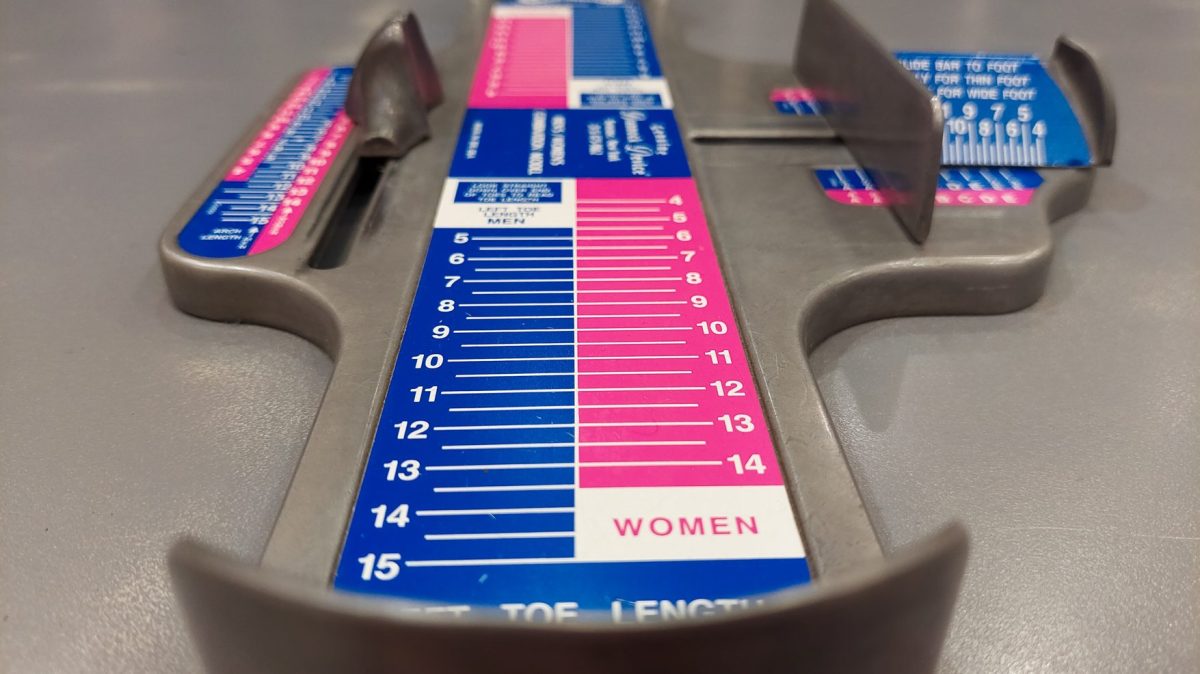The world of footwear encompasses a wide range of styles, designs, and sizes, catering to the diverse preferences and needs of individuals. One fascinating aspect within this realm is the distinction between men’s and women’s shoe sizes.
While shoe sizes are typically determined by length and width, the sizing conventions between genders can vary significantly. Men’s shoe sizes tend to be larger than women’s, reflecting the average physiological differences between male and female feet. However, the transition from men’s to women’s shoe sizes is not as straightforward as a mere conversion.
Factors such as foot width, arch support, and overall design can affect the fit and comfort of a shoe for individuals of different genders. Understanding the nuances of men’s shoe sizes to women’s can be helpful in ensuring a proper shoe fit and an enjoyable wearing experience for everyone, regardless of gender identity or expression.
Convert Men’s to Women’s Shoe Size
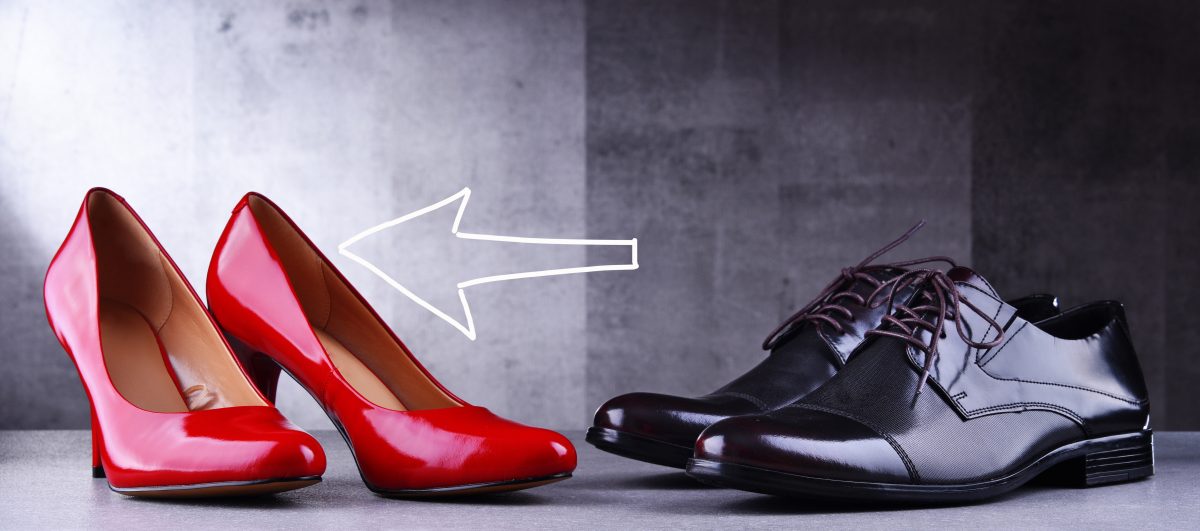
Converting men’s shoe sizes to women’s can be a helpful skill when shopping for shoes. While shoe sizes may vary between genders, understanding the conversion process allows women to find the perfect fit in men’s shoes. By considering the appropriate adjustments and using conversion charts as a guide, women can confidently navigate the world of men’s footwear and expand their options.
| Japan | U.K. | Australia | U.S. & Canada | Inches | Centimeters | ||||
| M | W | M | W | M | W | M | W | ||
| 21.5 | 21.0 | 3 | 2½ | 3 | 3½ | 3½ | 5 | 9 | 22.8 |
| 22.0 | 21.5 | 3½ | 3 | 3½ | 4 | 4 | 5½ | 91/8 | 23.1 |
| 22.5 | 22.0 | 4 | 3½ | 4 | 4½ | 4½ | 6 | 9¼ | 23.5 |
| 23.0 | 22.5 | 4½ | 4 | 4½ | 5 | 5 | 6½ | 93/8 | 23.8 |
| 23.5 | 23.0 | 5 | 4½ | 5 | 5½ | 5½ | 7 | 9½ | 24.1 |
| 24.0 | 23.5 | 5½ | 5 | 5½ | 6 | 6 | 7½ | 95/8 | 24.5 |
| 24.5 | 24.0 | 6 | 5½ | 6 | 6½ | 6½ | 8 | 9¾ | 24.8 |
| 25.0 | 24.5 | 6½ | 6 | 6½ | 7 | 7 | 8½ | 97/8 | 25.1 |
| 25.5 | 25.0 | 7 | 6½ | 7 | 7½ | 7½ | 9 | 10 | 25.4 |
| 26.0 | 25.5 | 7½ | 7 | 7½ | 8 | 8 | 9½ | 101/8 | 25.7 |
| 26.5 | 26.0 | 8 | 7½ | 8 | 8½ | 8½ | 10 | 10¼ | 26.0 |
| 27.5 | 27.0 | 8½ | 8 | 8½ | 9 | 9 | 10.5 | 10½ | 26.7 |
| 28.5 | 28.0 | 10 | 9½ | 10 | 10½ | 10½ | 12 | 10¾ | 27.3 |
| 29.5 | 29.0 | 11 | 10½ | 11 | 11½ | 11½ | 13 | 11 | 27.9 |
| 30.5 | 30.0 | 12 | 11½ | 12 | 12½ | 12½ | 14 | 11¼ | 28.6 |
| 31.5 | 31.0 | 13½ | 13 | 13½ | 14 | 14 | 15.5 | 11½ | 29.2 |
How Does The Basic Conversion Work?
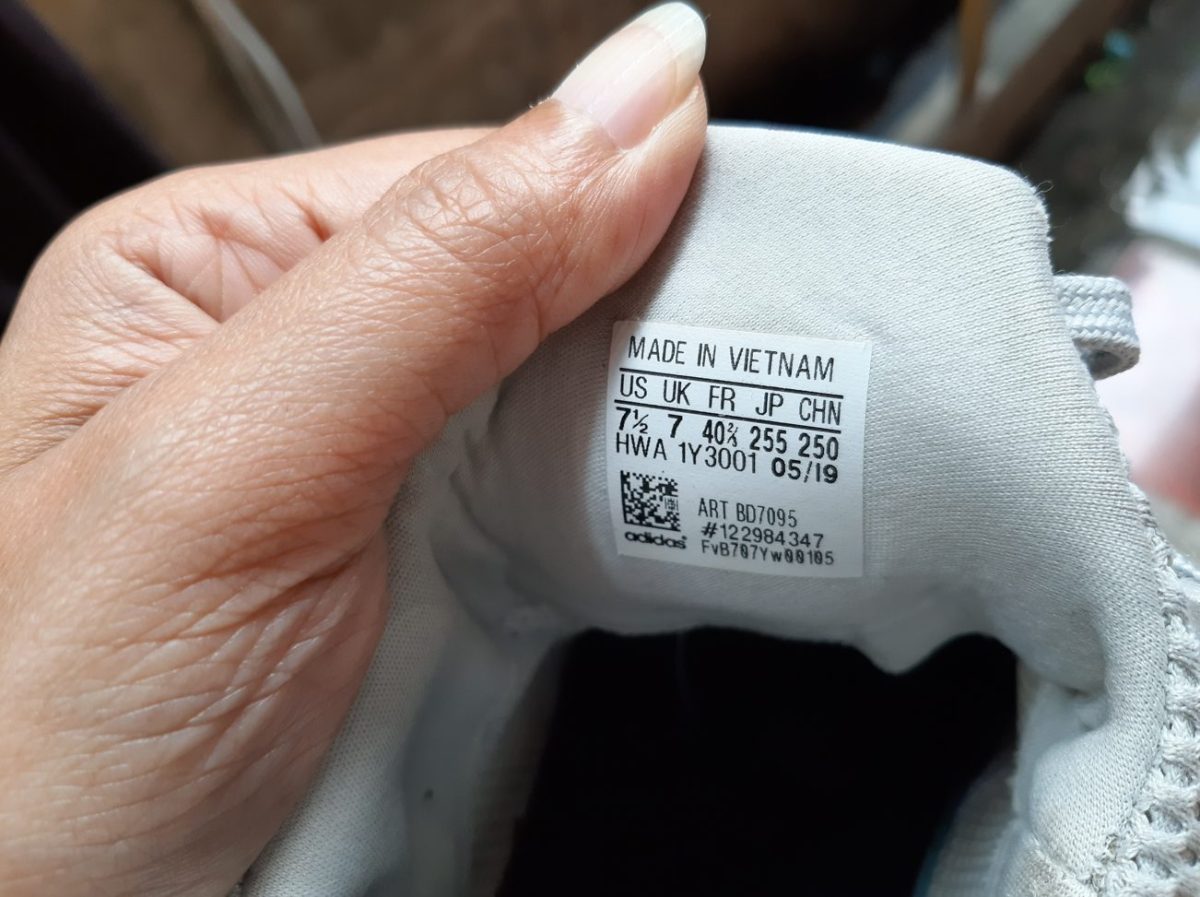
To support you in finding the perfect pair of shoes, we have thoroughly examined the world of men’s and women’s shoe sizes. In order to swiftly find the ideal match for your particular needs, we want to provide you with the knowledge you need.
Acquiring an understanding of your shoe size in various conversion systems holds an abundance of practicality that transcends mere convenience, as it empowers you with the ability to navigate the vast universe of footwear options with utmost confidence and proficiency.
Understanding the Intricacies of Shoe Construction
Analyzing how shoes are made is essential in comprehending the process of converting women’s shoe sizes to their male counterparts. This section delves into the fundamental principles of shoe construction, shedding light on the factors that influence size conversion.
Key Considerations for Accurate Size Conversion
When converting shoe sizes, several critical considerations must be taken into account to ensure a precise and satisfactory fit. This section explores the key factors that should be considered during the size conversion process.
The “1.5 Rule” vs. the Two-Size Differential Approach
This section delves into the debate surrounding the most accurate method for converting women’s shoe sizes to men’s sizes. Comparing the popular “1.5 rule” with the conservative two-size differential approach provides insights into the rationale behind each method and examines their implications for achieving an optimal fit.
Application of the “1.5 Rule” in Practice
Examining the practical application of the “1.5 rule” in converting shoe sizes, this section offers concrete examples and calculations to demonstrate how the rule is employed. It provides step-by-step guidelines for determining the corresponding men’s size when given a women’s shoe size and vice versa.
The Limitations of Size Conversion
While the “1.5 rule” serves as a useful guideline, it is crucial to recognize its inherent limitations. This section explores the potential drawbacks and uncertainties associated with size conversion, emphasizing the importance of additional information and factors in achieving an accurate fit.
Enhancing the Shoe Shopping Experience
To optimize the shoe shopping experience and attain a perfect fit, it is vital to consider supplementary information beyond size conversion. This section highlights the significance of understanding individual preferences, the type of socks worn, and the potential use of insoles, particularly when selecting running shoes.
Conclusion
By comprehensively examining the process of converting women’s shoe sizes to men’s sizes, this analysis aims to equip shoe shoppers with the knowledge and understanding necessary to make informed decisions. While the “1.5 rule” offers a valuable starting point, considering additional factors and individual preferences enhances the likelihood of procuring the perfect pair of shoes, irrespective of traditional gender boundaries.
Read more: How to Measure Baby Shoe Size in here
Difference Between Men’s and Women’s Shoe Sizes
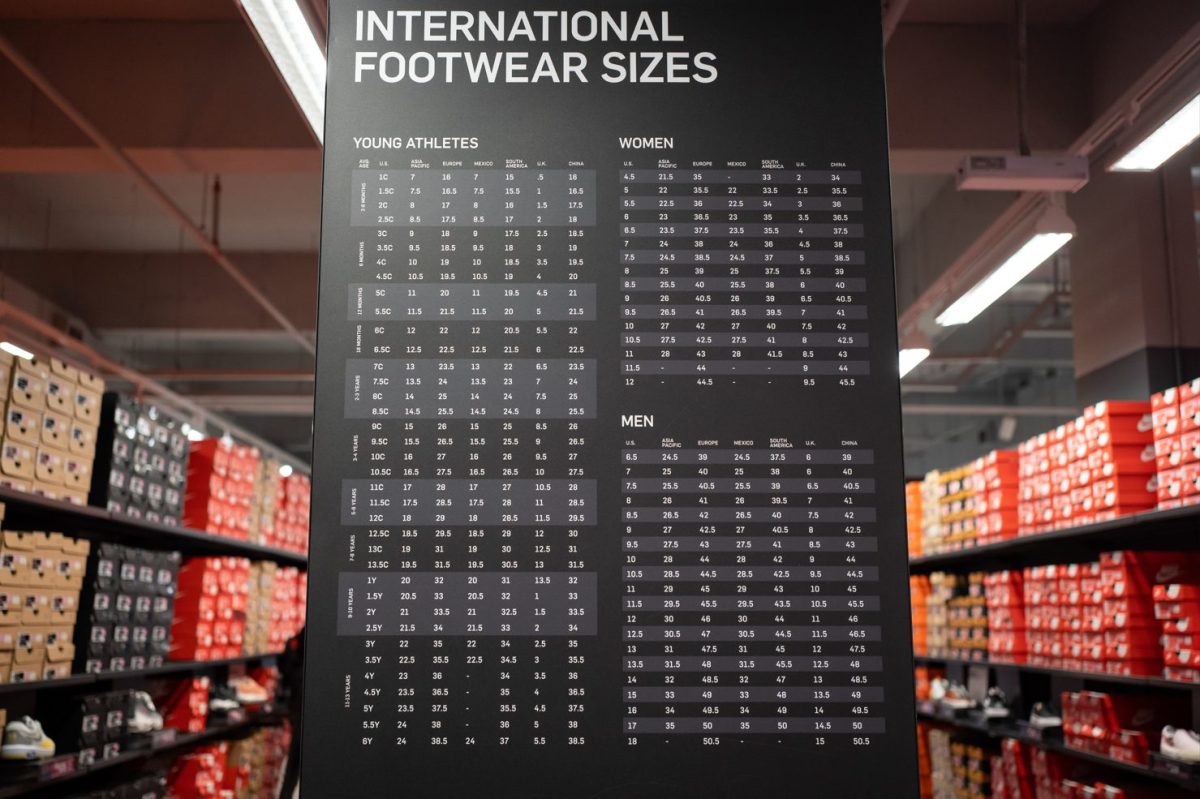
Shoe sizes are an essential aspect of footwear, ensuring comfort and a proper fit for individuals. However, there are notable differences between men’s and women’s shoe sizes, which reflect variations in foot anatomy, physiology, and the shoe sizing systems employed by manufacturers. This analysis delves into the key factors influencing these differences and examines how they impact the design, availability, and purchasing patterns of men’s and women’s shoes.
Foot Anatomy and Physiology

Men and women typically exhibit distinct foot anatomical features, leading to variations in shoe size requirements. On average, men tend to have broader feet with a higher instep, while women often have narrower feet and a lower instep. These structural dissimilarities affect the fitting and comfort of shoes, necessitating different size ranges for each gender.

Sizing Systems
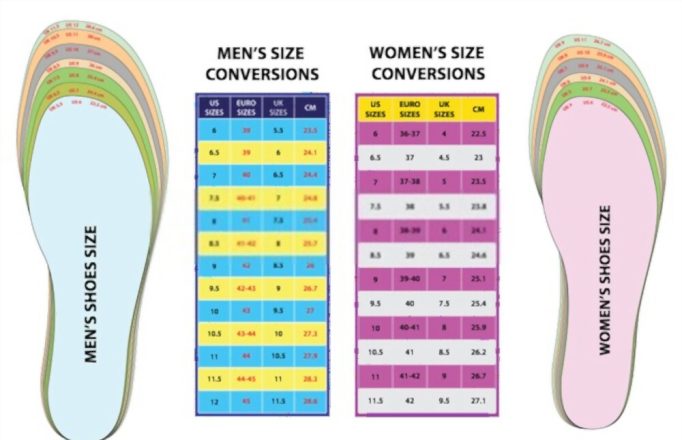
The traditional shoe sizing systems used by manufacturers also contribute to the disparity between men’s and women’s shoe sizes. Most countries adopt a separate sizing scale for each gender, resulting in varying size ranges. For example, in the United States, men’s shoe sizes usually start around six and extend to larger sizes, whereas women’s sizes commonly begin around four and encompass smaller ranges.
Length and Width Considerations
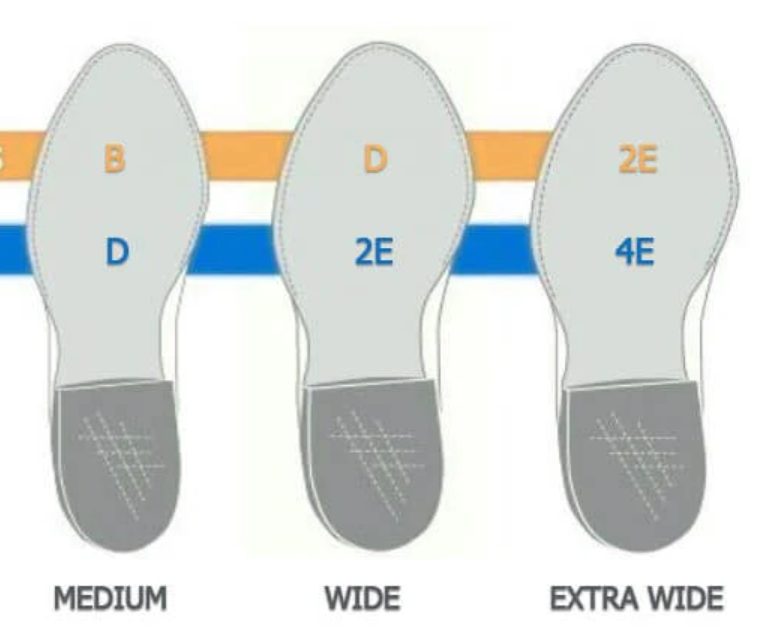
Beyond the numerical differences, shoe sizes for men and women also account for variations in length and width proportions. Women’s shoe sizes often incorporate narrower widths compared to men’s sizes, reflecting the general trend of women having slimmer feet. Men’s shoes, on the other hand, typically provide more width options to accommodate broader feet.
Fashion and Style Preferences
Fashion trends and style preferences also influence the available shoe options for men and women. Women’s shoe designs frequently encompass a wider range of styles, from heels and flats to sandals and boots, catering to diverse fashion choices. Men’s shoes, while still offering some variation, often focus more on practicality, such as dress shoes, sneakers, and boots. These differences in design may affect the size availability and options in each category.
Retail Practices and Marketing
The retail industry plays a role in perpetuating the distinction between men’s and women’s shoe sizes. Many shoe retailers dedicate separate sections for men and women, reinforcing the notion of gender-specific sizes. Marketing strategies, such as advertising campaigns and product displays, are often tailored to appeal to each gender’s preferences, further emphasizing the differences in shoe sizes.
Unisex and Gender-Neutral Options
Unisex and gender-neutral footwear has become increasingly popular in recent years, challenging the conventional binary approach to shoe size. Unisex shoe brands and retailers offer a standardized sizing system that disregards gender categorization and focuses on the individual’s foot measurements. This approach acknowledges that foot size variations exist within and across genders, promoting inclusivity and providing more options for people with non-conforming gender identities.
Conclusion
The difference between men’s and women’s shoe sizes stems from a combination of factors, including foot anatomy, sizing systems, length and width considerations, fashion preferences, and retail practices. Understanding these variations is crucial for both manufacturers and consumers to ensure the availability of appropriately fitting footwear. As societal norms continue to evolve, the rise of unisex and gender-neutral options represents a progressive step toward inclusivity and personalized shoe sizing based on individual foot measurements, regardless of gender identity.
Find more: How To Measure Shoe Size in this post
FAQs
Is the shoe size conversion the same for all shoe brands?
The shoe size conversion can vary slightly between different shoe brands. It is advisable to refer to the brand’s specific size conversion chart for accurate results.
Can I rely solely on the shoe size conversion chart to determine the right fit?
While the shoe size conversion chart is a good starting point, it’s important to remember that shoe sizes can also vary in terms of width and fit. Trying on the shoes or referring to the brand’s fit guide is recommended for a more accurate fit.
Do half sizes convert the same way between men’s and women’s shoe sizes?
No, half sizes do not convert the same way. Generally, you should subtract 1.5 from the men’s shoe size to convert it to the women’s whole size. For half sizes, it’s best to try on both the whole size below and above to find the best fit.
Are women’s shoe sizes smaller than men’s shoe sizes?
Yes, women’s shoe sizes are typically smaller than men’s shoe sizes. This is why subtracting from the men’s size is commonly used for conversion.
Are there any exceptions to the shoe size conversion formula?
While subtracting 1.5 from the men’s size is a common conversion method, it might not apply universally. It is usually advised to check with the size conversion table for the particular brand because various brands may have different conversion requirements.
Can I use a unisex shoe size chart for conversion?
Unisex shoe size charts are designed to accommodate both men’s and women’s sizes. So, if you find a unisex size chart, you can use it to determine your corresponding size in either men’s or women’s shoes.
Do shoe sizes vary between countries?
Yes, shoe sizes can vary between countries due to differences in measurement systems. When converting shoe sizes between men’s and women’s or between different countries, it’s important to use a reliable size conversion chart.
What should I do if the conversion suggests a half-size that doesn’t exist?
If the conversion suggests a half size that is not available, it’s generally recommended to round up to the next whole size. Trying on the shoes or consulting the brand’s fit guide can help determine the best fit.
Can I convert women’s shoe sizes to men’s using the same method?
No, the conversion method is different when converting women’s shoe sizes to men’s. In general, you would typically add 1.5 to the women’s size to get the corresponding men’s size. However, it’s important to refer to the brand’s specific size conversion chart for accuracy.

